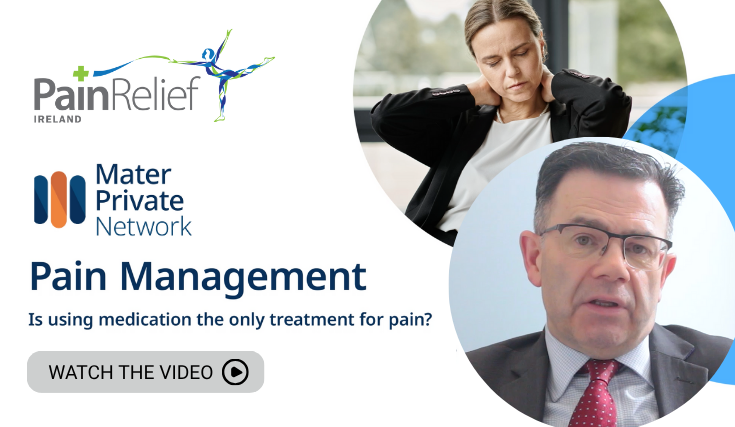
Prof. Dominic Hegarty (Clinical Director Mater Network Cork & Pain Relief Ireland) talks about Pain Treatment and why it's a myth that the only way of dealing with pain management is through tablets and medication.
Watch the Video Or Read the Full Transcript below...
Can't watch a Video right now?
Read the transcript below:
There's a myth that the only way of dealing with pain management is through tablets and medication. That unfortunately is not a good myth. Sometimes medication is a very useful tool. It does offer individuals relief and day to day comfort, and it can be quite helpful. But for many people, they don't want to be on the medication.
We know from all the literature that certain products are not good. Opioids, morphine based products, they can be problematic. They can give lots of side effects and give you a lot of addiction aspects to it, and often they're used in the wrong way. So the first element is medications are useful, but they're not the only tool we have. So very often, we would integrate that into an interventional strategy, some form of an injection or some form of a strategy that would work around that.
And injections are very useful. They're very targeted. Most of the injections that we would use, that I would be involved in, we would either have an ultrasound guided or we do X-ray guided scenarios. And these are very precise. The accuracy is improved.
The specificness of it is improved, but also the safety element is quite high. And the outcomes can be quite good. Usually, from intervention work, we're looking at a thirty to 50% improvement, and that makes a big impact on quality of life, on pain intensities, on sleeping aspects to itself. Then we might integrate a rehabilitation or a physiotherapy or a physical therapy program. And for some people, that's simply going to the swimming pool, doing a little bit of hydrotherapy, or others, it might be going to the gym or going for a walk.
It depends on everybody's needs on where they are at that particular time. So, normally, what I try and do is optimise the treatment for individuals, find something that they're comfortable or enjoying doing, and the literature would always support that. If an individual enjoys something or is happy doing it, then they're more likely to continue with that exercise or activity. Continuing the activity is the important bit. So between all of these elements, medications have a role, but there's an interventional component combined with rehabilitation, understanding the biological, the social impact of it, and the environment that people work in.
And that's at a very important aspect.










